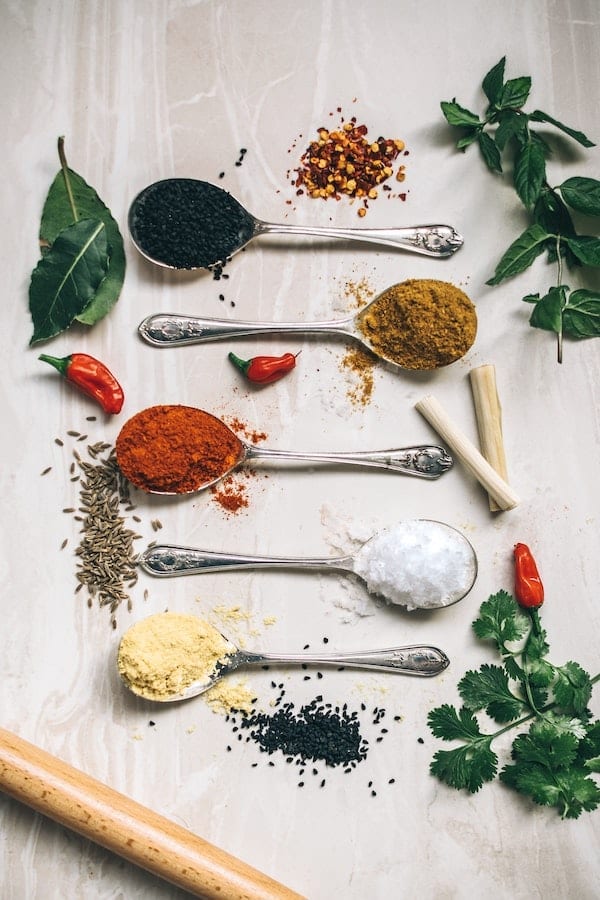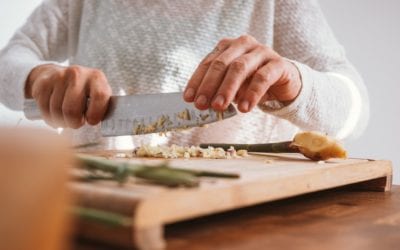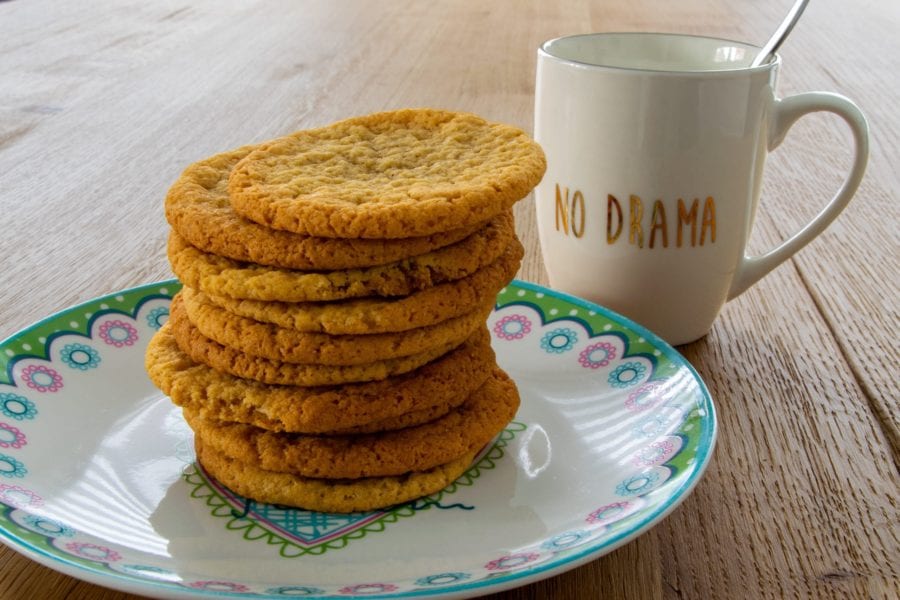Many beginner cooks shy away from using spices, primarily because they don’t learn how to use spices in cooking from watching YouTube cooking videos.
Spices can be intimidating, but they’re really not difficult to work with once you learn the basics.
Here I’ll walk you through 5 pro tips to help you learn how to use spices in cooking that will have you excited to stock your spice rack and start experimenting.
So get ready, things are about to get a little spicy.
Jump to Section:
[Related: “How To Learn To Cook Like A Chef: The Secret Guide“]
Let’s Learn How To Use Spices In Cooking:
1. What’s the Difference Between an Herb and a Spice?
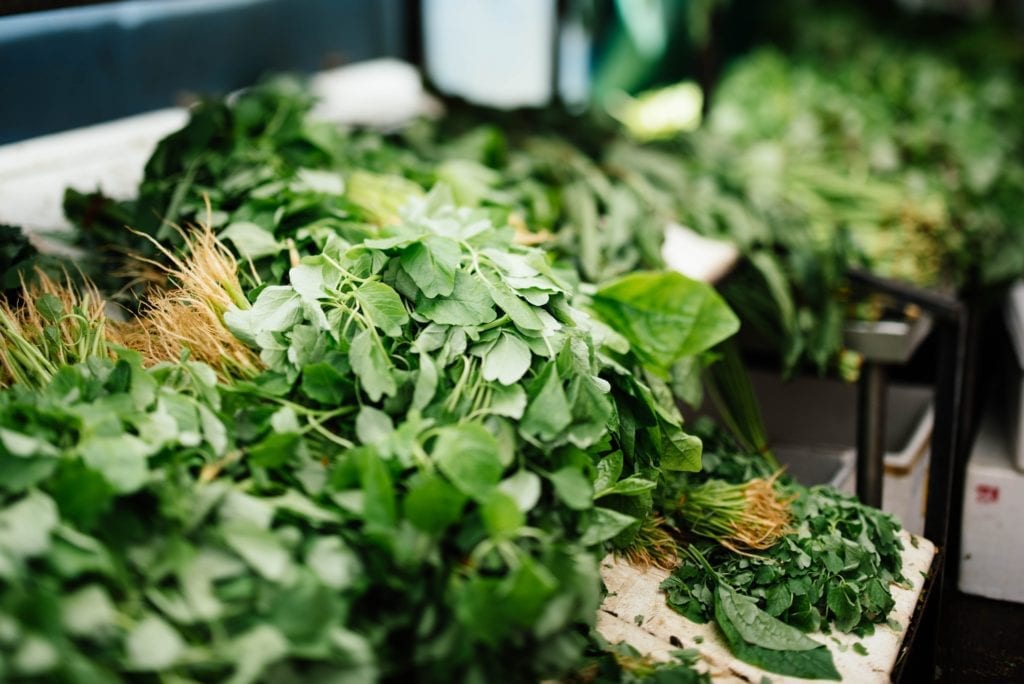
If you’re looking to learn how to use spices in cooking, knowing the terminology is your first step.
The terms herbs and spices are often used interchangeably in cooking, but are they the same thing? Not exactly.
While in many cases a dried spice may be substituted for its fresh herb counterpart and vice versa, the two are not identical.
Herbs are fresh, aromatic, tender leaves and stems of a plant. Spices are the dried seeds, roots, or bark of a plant.
Because herbs are tender and more delicate, they should be used later in the cooking process or as a finishing touch.
Spices, on the other hand, benefit from additional cooking time to encourage the release of natural flavor.
For example, if you are cooking a marinara sauce recipe and using basil for seasoning, you would add dried basil early in the cooking process and let it simmer.
Fresh basil, however, should be stirred in as a finishing touch, as it will lose its potency and be lost in the sauce if added too early in the cooking process.
[Related: “The Best Beginner’s Guide On How To Learn Cooking Techniques“]
2. Buying Spices

Any chef will tell you to buy spices in bulk, so that you may select by scent and buy only what you need.
But I’m all about convenience (and I’m a normal person) so I buy my spices at my local Trader Joe’s, Whole Foods, or market.
The trick to buying spices is less in the actual buying and more in the storing, which we’ll get to in a moment.
When selecting your spices, don’t feel like you need to buy every spice under the sun.
Once you learn how to use spices in cooking, you’ll find that there are several main spices you return to time and again for multiple recipes.
Now, this may be because you prefer the flavor and aroma of a particular spice or perhaps you like to cook one type of cuisine over another (like Italian vs. Indian).
Whatever your preference, look for whole spices whenever possible. They stay fresh much longer (up to five years) versus their pre-ground counterparts that only last 6 months at most after opening.
Get yourself a simple coffee grinder (devoted only to spices to avoid coffee flavor in your food) and grind them as you need them.
I also like to use a mortar and pestle for softer spices like cardamom seeds.
[RELATED: “5 Awesome Ways To Learn To Love Cooking“]
3. Storing Spices
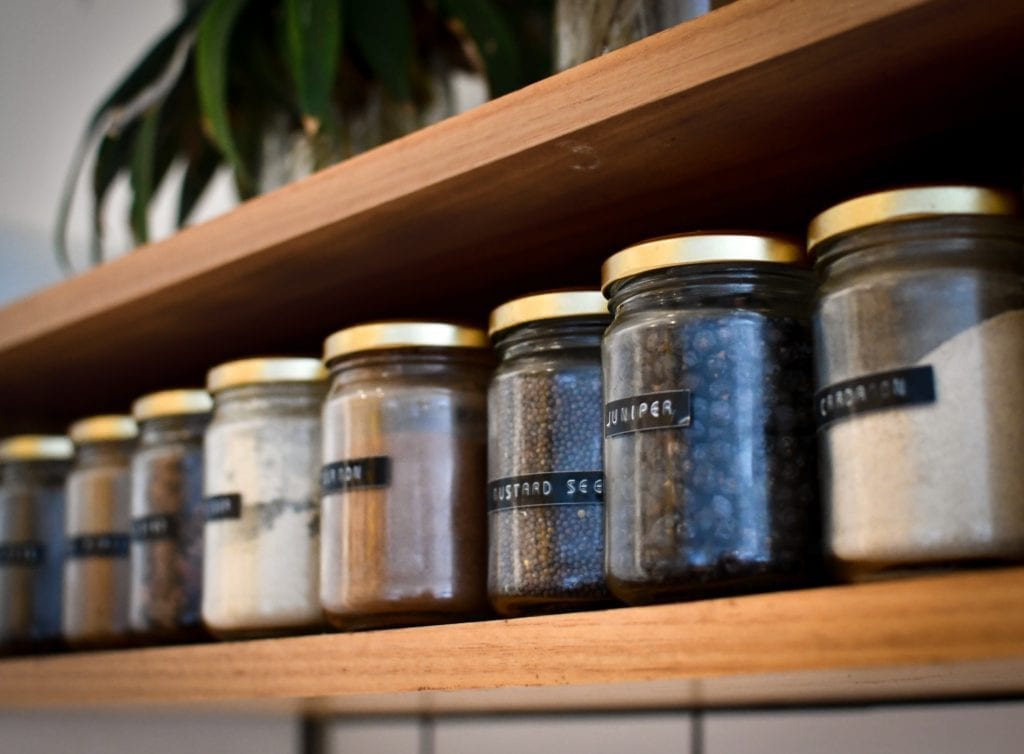
No matter which spices you choose to keep on hand, storage is key.
Avoid storing your spices near a heat source (aka, your oven or dishwasher) and be sure to keep them out of the light.
Resist the urge to leave anything aside from salt on your counter at arms length.
Spices last much longer when stored in a dark, cool place in an airtight container.
Once ground spices have been exposed to the air they will last, at most, 6 months. Sigh.
Whole spices, however, can stay fresh for several years when stored properly.
Be sure to check the expiration dates on your spices regularly. If a spice is past its prime, it will often fade in color and the aroma will be very weak.
While it won’t hurt you to consume a spice that is less than fresh, it certainly won’t do much in the way of seasoning either.
Pro tip: take a marker and write the date you opened the spice on the container or jar. If it’s a ground spice, discard it after 6 months. If whole, keep up to five years but test for potency before using.
As mentioned earlier, buy spices that you may not use as frequently (for me, this is saffron) in the smallest container you can find to avoid waste.
[Related: “The Top 7 Reasons Why You Should Learn How To Cook“]
4. Enhancing Spices

Using whole spices and grinding as needed ensures that you are using the freshest spices possible in your cooking.
But did you know that you can boost the flavor of a spice even more?
One trick chefs have been using for years is toasting spices.
This cooking technique works best with whole spices, but ground spices can benefit too from a little wake up call.
Heat a dry skillet over low heat and toast whole spices for a couple of minutes, shaking the pan frequently. For ground spices, only toast for a 15-30 seconds.
Grind the spices in your dedicated coffee grinder after you’ve toasted them.
Another fantastic technique for drawing flavor from your spices is what’s known as blooming spices.
Essentially the term ‘blooming spices’ refers to the process of lightly frying spices in oil. Why does blooming (or tempering) spices make them more flavorful?
Many of the flavor compounds found in spices are fat-soluble. And because fat coats the tongue, the oil brings those aromatic compounds into contact with your taste buds for a longer period of time.
Neat, right? The process is super simple: just place 2 tbsp of oil in a skillet and add your favorite spices. Cook until the spices are fragrant and toasty, and stay close by as this is a quick process.
Just avoid blooming any whole spices that you wouldn’t want to eat whole, as you can’t grind them after they’ve been fried in oil.
Use the flavored oil over pasta, as a base for a salad dressing, or drizzled over your favorite veggies.
See how easy that was to learn how to use spices in cooking like a pro? Nailed it.
[Related: “10 Fun Things To Learn How To Cook Like A Pro“]
5. Using Spices
Ok now that we’ve covered the basics needed to learn how to use spices in cooking, let’s get to the meat and potatoes, so to speak.
Using spices in cooking is a game of trial and error and personal taste.
There are, after all, some herbs & spices that don’t appeal to everyone’s taste buds (like all of the insane people who think cilantro tastes like soap).
So practicing with different spices is key to determine which you like and if there are any you don’t.
The key to seasoning food is not only in the spice selection, but also in the timing of the seasoning.
As we discussed earlier, dried spices should be added during the cooking process to allow them time to release their flavor and aroma. Do not use dried spices as a garnish or finishing touch.
Fresh herbs, however, may be chopped and sprinkled over dishes to add a punch of flavor without tasting bitter or overly seasoned (unless you’re a cilantro-hater).
Experiment with spices from all over the world and don’t be afraid to try recipes that use spices you’ve never heard of, just try to buy them in small quantities if you don’t plan to use them regularly.
Try substituting a more interesting spice for traditional cayenne pepper, for example. Did you know that Aleppo Pepper brings a similar heat to red pepper flakes but also adds a complex citrusy note as well?
More flavor with one simple swap. Boom.
Be patient as you learn how to use spices in cooking, as this is a journey that will take time but will be so worth it once you’re comfortable cooking with spices and are creating chef-worthy meals at home.
[Related: “5 Unexpected Lessons Learned From Cooking“]
What are the essential spices every kitchen should have?
Here are my top 10 spices every home cook should keep on hand:
- Black Peppercorns (whole)
- Thyme
- Oregano
- Cumin (whole or ground)
- Red Pepper Flakes
- Granulated Garlic
- Cinnamon
- Turmeric
- Bay Leaves
- Chili Powder
Happy cooking!
If you want more tips to learn how to use spices in cooking, check out 7 Of The Best YouTube Videos To Learn How To Cook!

